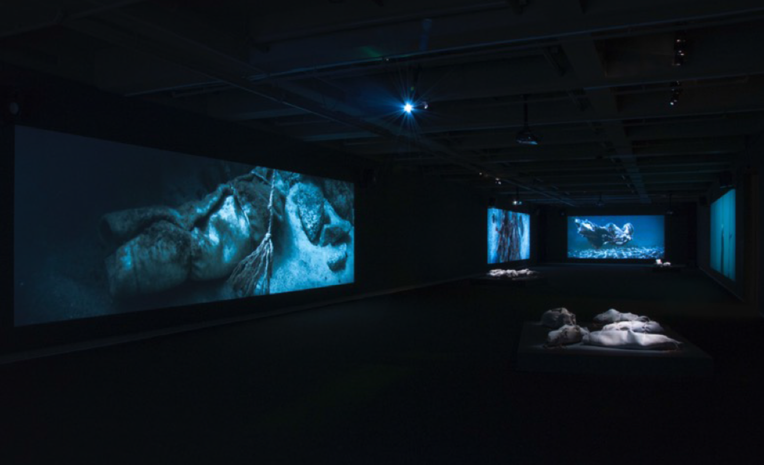The Power of Construction: Refugees and Turkey’s War in Northern Kurdistan
From the Series: Refugees and the Crisis of Europe
From the Series: Refugees and the Crisis of Europe

The ongoing war in Syria already includes other geographies. “We are all in the war,” said French president François Hollande after the November 2015 Paris attacks. Since 2011, hundreds of people have been killed in ISIS-related violence in Turkey, in cross-border shootings, and in rocket attacks, bombings, and suicide bombings in Kilis, Hatay, Diyarbakır, Suruç, Ankara, and Istanbul.
When the Turkish government ended peace negotiations with the armed forces of the Kurdish Workers’ Party in July 2015, it began another war, one eclipsed by the war in Syria. Since then, the new strategy of the state is a return to the counterterrorism operations of the 1990s aimed at securing “one nation, one state, one language, one flag” within the borders of Turkey. Over a nine-month period in late 2015 and early 2016, the state declared curfew sixty-three times in seven cities, twenty-two towns, and dozens of neighborhoods. As of April 17, 2016, six hundred people were killed in these “special security zones,” and 868 people in total were killed. Those critical of the ongoing state violence, including elected officials, journalists, lawyers, academics, are declared to be terrorists without weapons. Many have lost their jobs and been arrested.
The Turkish state’s ongoing war in the Kurdish region of Turkey, or North Kurdistan, aims to “clean” (temizlemek) the territory of terrorists, which also means displacing people from spaces to be cleaned. The neighborhoods and towns to be cleaned are not only the places where the Young Kurdish Fighters operate, but also where the political project of democratic autonomy is being undertaken by the Kurdish Movement, supported by a larger network of leftist political actors throughout Turkey.
During 2015 and 2016, hundreds of thousands of Kurdish people were forced to move out of their houses and their neighborhoods until the curfew was declared to be over. In some cases, the curfew lasted for months. For many there were no homes left to come back to after the curfew. Video footage of the aftermath shows that there were often no neighborhoods left to inhabit. Homeless returnees mostly moved to nearby towns, renting flats or staying with relatives. According to the state, 355,000 people were forcibly displaced during this process; nongovernmental organizations put the number much higher.

In the wake of this destruction, the state has promised to rebuild. Referring to how the state will show its affection (şefkat) by reconstructing what was demolished during the military campaign, former Prime Minister Ahmet Davutoğlu indicated that “the State will also demonstrate its power of construction [inşa kudreti].” Today, cleansing operations continue to kill Kurdish bodies. For those who manage to escape and survive the siege—and to prove that they are not terrorists—the state will construct new towns, city centers, and neighborhoods. The destructive logic of the power of construction encompasses the Turkish state’s solution to the Syrian refugee crisis as well. In the words of Turkish President Recep Tayyip Erdoğan, “What is the formula? I am telling you, let us build a city in North Syria . . . so we can resettle those who leave Syria, as well as have an opportunity to resettle the ones who are in Turkey.”
On March 4, 2016, President Erdoğan laid out the contributions that Turkey, with its open-border migration policy and more than three million migrants from Syria, can offer to Western leaders. The best solution to the current crisis, according to Erdoğan, is constructing a new city in Syria for the migrants, who were described as “our refugee brothers” displaced due to the war. These declarations of affection and brotherly love serve particular purposes. Construction is not only a crucial industry for growth in Turkey, an industry for which the war in Syria, like the wars in Iraq and Libya, is expected to create new opportunities. The state’s power of construction is also materially and discursively tied to the issue of state sovereignty.
Although the idea of building cities in Syria has so far not convinced Euro-American leaders, on March 18 Turkey and the European Union signed an agreement that was described in the international press as a deal or swap. Turkey agreed to receive all new, “irregular” migrants who crossed the Aegean Sea to reach Europe but were returned by Greece. In exchange, E.U. member States agreed to resettle in Europe equal numbers of “regular” Syrian refugees already residing in Turkey. E.U. states will also provide more financial support for Turkey’s construction of refugee camps. The final component of the agreement is the conditional visa liberalization for Turkish citizens travelling to the European Union. Hence, the refugee crisis has been translated into a refugee swap or refugee deal that aims to decrease unauthorized crossings over European borders. By demanding “regular” or official migration procedures, the European Union punishes those who survive a dangerous boat trip to Greece’s coasts by sending them back.
Yet this strategy of isolating Syrian refugees as the source of the current crisis and, therefore, intensifying state border controls only aggravates the problem by making invisible the chronicity of ongoing migrant issues and the conditions of war that constantly displace people and force them to undertake deadly journeys. Revealing the paradoxical position of Turkey, which appears to be an ally in housing refugees from the war in Syria even as it displaces its own citizens to make war in Northern Kurdistan, can help us to see that people crossing the border between Syria and Turkey enter another war. It can help us to see that alliances growing out the refugee crisis are by no means independent from the Turkish state’s power of construction.